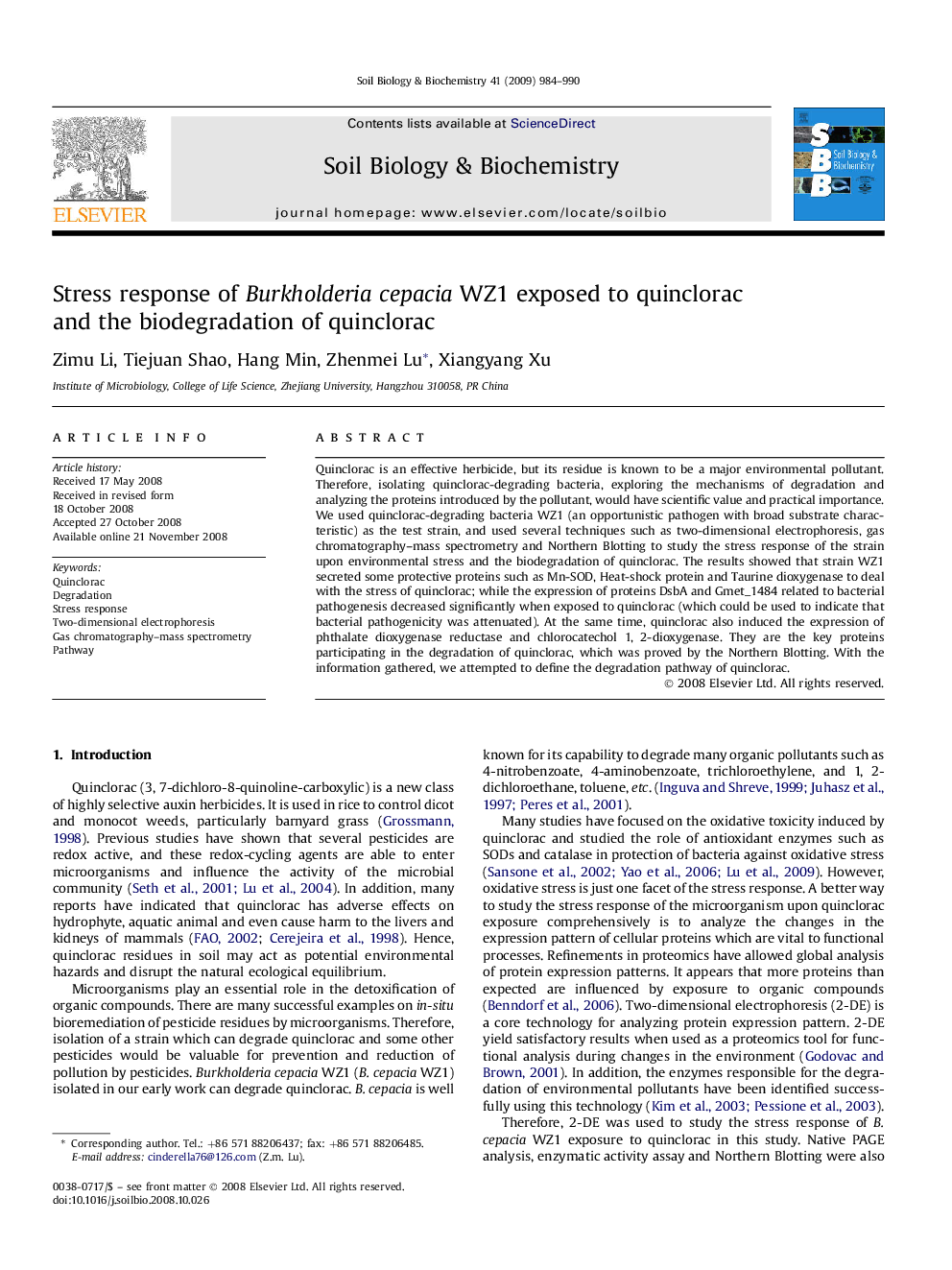| Article ID | Journal | Published Year | Pages | File Type |
|---|---|---|---|---|
| 2025763 | Soil Biology and Biochemistry | 2009 | 7 Pages |
Quinclorac is an effective herbicide, but its residue is known to be a major environmental pollutant. Therefore, isolating quinclorac-degrading bacteria, exploring the mechanisms of degradation and analyzing the proteins introduced by the pollutant, would have scientific value and practical importance. We used quinclorac-degrading bacteria WZ1 (an opportunistic pathogen with broad substrate characteristic) as the test strain, and used several techniques such as two-dimensional electrophoresis, gas chromatography–mass spectrometry and Northern Blotting to study the stress response of the strain upon environmental stress and the biodegradation of quinclorac. The results showed that strain WZ1 secreted some protective proteins such as Mn-SOD, Heat-shock protein and Taurine dioxygenase to deal with the stress of quinclorac; while the expression of proteins DsbA and Gmet_1484 related to bacterial pathogenesis decreased significantly when exposed to quinclorac (which could be used to indicate that bacterial pathogenicity was attenuated). At the same time, quinclorac also induced the expression of phthalate dioxygenase reductase and chlorocatechol 1, 2-dioxygenase. They are the key proteins participating in the degradation of quinclorac, which was proved by the Northern Blotting. With the information gathered, we attempted to define the degradation pathway of quinclorac.
